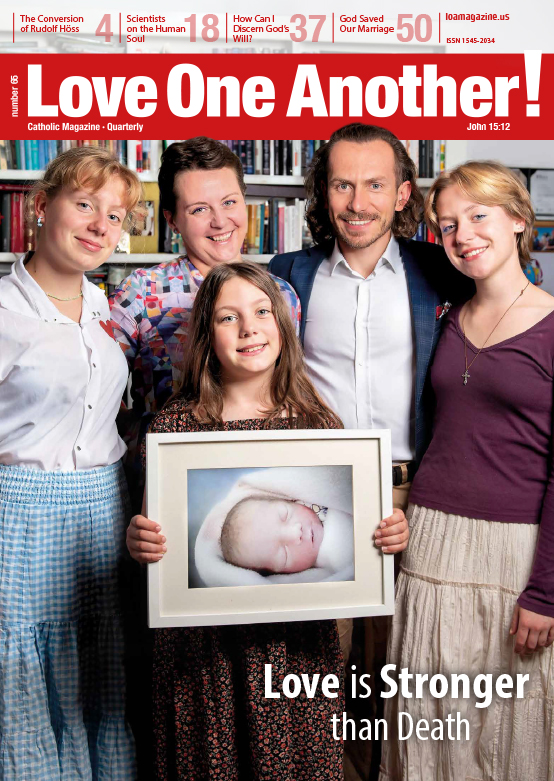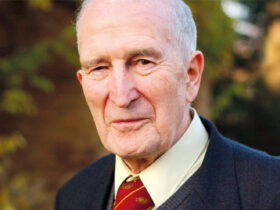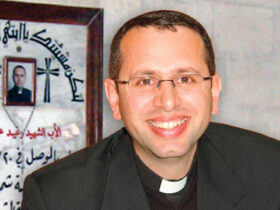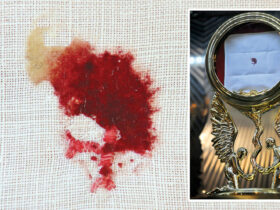The Rosary: Hope for Man and the World
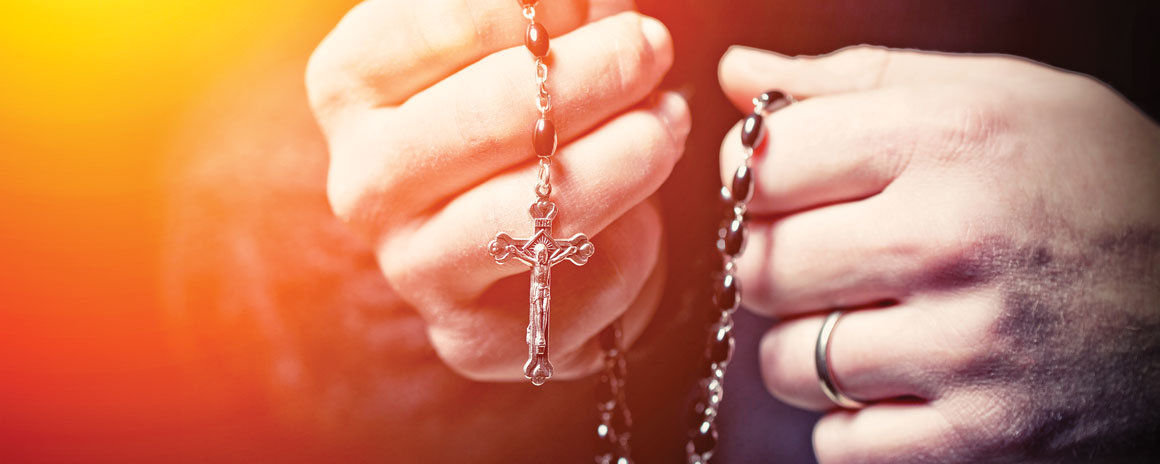
For centuries, the Rosary has been a special prayer, whose effectiveness has been attested to by many graces, miraculous divine interventions, reformations and healings. Our Lady, many saints and doctors of the Church, actively encouraged the faithful to recite it. However, in the 20th century, the Rosary showed its power in an absolutely exceptional way.
In 2017, we celebrated the centennial of the Fatima apparitions, in which the Virgin Mary appealed to mankind for reformation and to take up penance and prayer – especially the Rosary. It is worth reminding ourselves and considering yet again how the Rosary has saved people in unbelievable ways, entire communities and nations reciting it, and on many occasions it has changed the course of history by saving the world from total annihilation. The Miracle on the Vistula, the miraculous liberation of Austria from the Soviet occupation in 1955, a peaceful revolution in the Philippines in 1986, the fall of communism in certain countries – all these events would not have occurred, had not it been for the rosary. However, two miracles are absolutely exceptional: they happened when everything should have been annihilated.
It protects against a nuclear bomb
In the morning of August 6, 1945, the first of the two atom bombs that Americans dropped over Japan exploded above Hiroshima, just eight blocks away from the monastery of the Jesuit Fathers. This event was well-remembered by the then prior of the monastic community, Fr. Hubert Schiffer. He had just finished celebrating Mass and was about to have his breakfast when suddenly everything was shaken by a mighty explosion. “It came as an absolute surprise. Suddenly…, in the blink of an eye, there appeared around me a supernatural unbearable blaze; an unimaginably bright, dazzling, intensive light. I could not see or think. For a short while, everything stood motionless… Suddenly, the air was filled by a terrible explosion with a single lightning. An invisible force lifted me from my chair, cast me in the air, shook and knocked me around like a leaf in a fall wind. Suddenly the light went out. Everything was dark, silent and empty. I was conscious, because I tried to think about what had happened. I groped around in the total darkness engulfing me… It was then that I heard my own voice. This was the most terrifying experience of all as it proved that I was alive and convinced me that some terrible disaster had taken place.” The entire Jesuit community of eight men survived the explosion. How was this possible if within the radius of half a kilometer from the epicenter of where the atomic bomb fell, killing all residents of Hiroshima? Admittedly, two persons survived but soon afterwards died of the radiation sickness. What is more, the structure of the Jesuit church remained intact while surrounding buildings were totally demolished. Moreover, having received such a high dose of radiation, all the Jesuits should have died of the radiation sickness within two or three weeks. “Meanwhile, until the end of their long lives, they enjoyed good health. It was so inexplicable for science that American scientists examined Fr. Schiffer over two hundred times in an attempt to find out why he survived.” They also wanted to “find a means of protecting people against the effects of a nuclear explosion. They did not find anything except an explanation repeated by the Jesuit: ‘In this house, we prayed the rosary every day. In this house, we relived the Fatima message every day’” (Quotes from W. Łaszewski, Wszystko o różańcu, który może wszystko [Everything about the Rosary that can do everything])
“A ball of fire” and the miraculous salvation of “the Japanese Niepokalanów”
The second nuclear attack that Japan sustained occurred only a few days after the annihilation of Hiroshima. This time, Nagasaki was targeted. There, too, a Franciscan monastery, built by St. Maximilian Maria Kolbe, survived in an inexplicable manner. When in 1930, Fr. Kolbe arrived in Japan, he was given a plot of land by the bishop to build a monastery. His companions, however, tried to persuade Fr. Kolbe to change the location, because the plot was inconvenient as it lay on the steep slope of inaccessible Mount Hikosan and occupied an ancient outlying cemetery of Christian martyrs overgrown by wild vegetation. An alternative site was located in the Urakami district, on the shore of a bay, inhabited by 15,000 Christians and boasting the largest Christian temple of the then Far East – the Cathedral of the Immaculate Conception of the Virgin Mary. In spite of this very favorable location, Fr. Kolbe did not change his mind. When he visited the site, he said: “We cannot build a monastery here; soon a ball of fire will drop here and destroy everything.” Thus, the slope of Mount Hikosan was chosen. The choice, in hindsight, proved to be beneficial. When 14 years later, Nagasaki suffered a nuclear attack, the bomb was dropped on the first building identified by the bomber pilot: the Cathedral. The explosion destroyed everything within the radius of 1.6 km, while city districts situated further away from the epicenter were laid waste by multiple fires. Meanwhile, the buildings of Fr. Kolbe’s monastery, being in part timbered structures, had only their windows broken…
How could St. Maximilian foresee that the atom bomb would be dropped in that very place? It is worth stressing that the choice of this city as the target of the nuclear attack was not certain almost to the last moment, with the choice depending on weather conditions. Nagasaki was a secondary target to the city of Kokura and when finally a decision was made to attack Nagasaki, clouds covered the city center. As a result, the atom bomb was dropped about 3 km away from the planned aiming point, in the suburbs, almost exactly over the place where St. Maximilian’s monastery was to be built 14 years earlier. The probability that the bomb would fall in this very place was thus very low! How, in the first place, did Fr. Kolbe, foresee the strike of a “ball of fire” which would destroy everything? The first successful nuclear fission took place only in 1938, eight years after the prophetic statement by St. Maximilian. When Fr. Kolbe arrived in Japan, he brought a statue of the Immaculate Mother and – as before – he never parted with a rosary. He would say the rosary many times a day, always with unusual concentration and visible joy. Witnesses related that even when he was talking to somebody, he would move the rosary beads under his habit. It was the Immaculate Mother, whom he had come to love so much and with whom he was united through the rosary, which gave him insight into the future. When Fr. Maximilian went to pray, he would take a rosary and say: “I am going to shoot at Satan!”
The great power of a single Hail Mary
The great and miraculous power of the Hail Mary is attested by the words of St. Jean-Baptiste-Marie Vianney, who said that: “One piously said Hail Mary, rocks the entire hell!” St. Louis-Marie Grignion de Montfort, in turn, wrote: “When the Hail Mary is well said, that is, with attention, devotion and humility, it is, according to the saints, the enemy of Satan, putting him to flight; it is the hammer that crushes him, a source of holiness for souls, a joy to the angels and a sweet melody for the devout. It is the Canticle of the New Testament, a delight for Mary and glory for the most Blessed Trinity… I earnestly beg of you, then, … to say the Rosary, and if time permits, all its fifteen decades, (with the introduction of the 4th Mystery in 2002 this could be updated to read twenty decades) every day. Then when death draws near, you will bless the day and hour when you took to heart what I told you.” (St. Louis Marie de Montfort, Treatise on True Devotion to the Blessed Virgin)
The efficacy of the rosary was also realized by St. John Bosco, whom God enlightened by visions that he had while asleep. A strange dream that Fr. Bosco had on the eve of the feast of the Assumption of the Blessed Virgin Mary in 1862 made him realize what an effective weapon the rosary was in the struggle against Satan. In the dream, St. John Bosco was taken to a meadow where he saw a thick snake, about eight meters long. The priest wanted to flee, but Our Lady stopped him, encouraging him to fight. Together, they took a rope, stretched it over the monster’s neck, hit it with the rope, and finally tied it around the reptile’s neck to strangle it. The snake thrashed about, pounded the ground with its huge bulk of a body, only to be torn into pieces. Then, the Virgin Mary coiled the rope and put it into a box. Upon the next opening of the box, the rope was found to have arranged itself into the words: Hail Mary. Our Lady explained that the snake represented Satan, while the rope stood for the prayer Hail Mary or rather the rosary, which is its expansion. St. John Bosco understood that it was with the rosary that all hellish demons could be defeated and destroyed.
Father Francesco Bamonte in his book The Virgin Mary and the Devil in Exorcisms describes his conversations with demons that had been forced to speak the truth during exorcisms. This is what one of them confessed: “If only people knew that they have such a weapon within their reach, I would be sitting in hell alone. But you do not listen to popes, saints and prophets. Nor do you listen to your own heart. I defeat you due to your stupidity and pride. I am not afraid of you. But I am afraid of her rosary.” (Quoted from W. Łaszewski)
When St. Teresa of Avila died after nine months of intense suffering, she appeared in a dream to her confessor and told her that now when she knew what credit can be gained for piously saying the Hail Mary, she would be happy to return to earth and suffer again those nine months if only she could but once piously recite a single Hail Mary…
Prayer – wasted time?
For many people praying is a waste of time. Meanwhile, the Virgin Mary appeals to and calls upon mankind to help her defeat evil and bring peace to the world with prayer and fasting. These are not empty promises, as can be seen from hard facts, which cannot be brushed away as mere coincidences. Our Lady in Medjugorje asks for prayer in these words: “Pray as long as you can, but always pray more: each of you should pray as many as four hours a day, but I know that many people don’t understand this, because they keep thinking only of earning a living.” In divine economy, time devoted to prayer is not wasted time. On the contrary, St. Teresa of Avila wrote that it was the time that we did not devote to prayer that was wasted time. Prayer is and ought to be the pivot of our life and the most important moment of every day. St. Alphonsus Maria Liguori, before and after any action that he did, said a Hail Mary and advised others to do the same. He would say: “These acts are successful that are surrounded by two Hail Marys.” When we find time for prayer, God will grant us grace to find time to fulfill all our duties, provided that they agree with God’s will. Let us reject what is unnecessary, fruitless and ungodly and we shall find time for that which is godly, for prayer, work and rest. God in his power may make us do the work in one hour which without prayer would take us the entire day and even that might not be enough! This is borne out by miraculous events in the life of St. Faustina, who – looking at it from a human point of view – was a frail and sickly woman. In spite of this, many a time and with God’s grace, she was able to complete in a short time tasks that usually required more time and involvement of more sisters! An old adage says: “When God takes pride of place, then everything else is right in its place.”
During her mystical encounters with Jesus, Alicja Lenczewska heard also the following words: “Meeting me is the most important moment of your day – with it everything should start. Then you will have time for everything and peace in your heart… Everything is the fruit of prayer. Your prayers reflect your life: the state of your soul and body as well as your deeds… Everything you do with your heart, mind or hands – for it to have sense and value – must begin with prayer and end with prayer… As much as you have received from me in prayer, you can give – of what is worth giving – another man.” When a person does not pray, he breaks away from the source of his existence – and is tossed about and manhandled by himself or by other people, but above all by the spiritual powers of evil… What you need to do is to constantly hold on to a rosary and adore me in the Blessed Sacrament. If you feel that Satan is about to attack, when darkness envelopes you and your soul feels oppressed, immediately say Under Thy Protection, because this is an exorcism… Start everything with prayer and you will not have any problems with time.” (A. Lenczewska, Testimony)
Therefore, let’s try to make prayer – as suits our calling – fill the whole time given to us on earth. Our Lady asks us to set aside some time for prayer every day. It would be still better if we sent incessant prayers of praise to God the Father, in unity with the Holy Spirit, who dwells in us and prays, listening carefully to his voice, regardless of tasks performed by us. The purpose is to make prayer pervade all our time and our whole life so that we praise God with our work and deeds, regardless of our calling and occupation. Work performed with love becomes a prayer too. Nevertheless, it is crucial, whenever practical, that we set aside a fixed time every day for the rosary, the Chaplet of Divine Mercy, adoration, the reading of the Scriptures and the Eucharist. The rosary is primarily a mental prayer in which we accompany the Virgin Mary in contemplating the mysteries of her life and the life of Jesus. This is a prayer of the heart consisting of internally contemplating the Incarnate Word. May the example of the saints motivate us to recite the rosary daily and persistently. St. John Paul II every day recited all four parts of the rosary and additionally a fifth one for a given day. St. Pius of Pietrelchino, in turn, recited it even 30 times a day! Two days prior to his death, this saintly Capuchin said: “Recite the rosary, recite it always, whenever you can!”
Victory of the Immaculate!
One hundred years ago in Fatima, Our Lady pointed to the rosary as the most effective instrument to save the world from destruction. In the history of the Church, as many as 39 popes, including all successors to St. Peter serving in the 20th and 21st centuries, have encouraged the faithful to say the rosary.
The fate of the world hangs in the balance between man and a merciful God, who waits for our intercessory prayer. A single praying man may change the fate of the world. This option is given to us by the merciful God, who made the Virgin Mary our Intercessor and gave us a wonderful instrument for pleading for all kinds of graces – the rosary. St. John Paul II in the Apostolic Letter Rosarium Virginis Mariae wrote: “The Church has always attributed particular efficacy to this prayer, entrusting to the Rosary, to its choral recitation and to its constant practice, the most difficult problems. At times when Christianity itself seemed under threat, its deliverance was attributed to the power of this prayer, and Our Lady of the Rosary was acclaimed as the one whose intercession brought salvation. Today I willingly entrust to the power of this prayer… the cause of peace in the world and the cause of the family.”
Finally, remember the last prophetic words of the servant of God, Primate August Hlond, which he uttered just a day before his death: “Victory, when it comes, will be the victory of the Blessed Virgin Mary.” In personal acts of giving oneself up, let us entrust ourselves daily to Our Lady and entrust to her Immaculate Heart our entire life and all our problems. Let’s do it also in our families, prayer communities, neighborhoods and places of work. Let’s adopt the spirit of penance, reciting the rosary daily. We will not attain peace in the world, unless peace – through prayer – fills us first. Let us pray in particular for the reformation of sinners, because Our Lady asks for it so much. The miracle of reformation is the greatest of all miracles – greater than saving an earthly life or healing from a disease – as it gives a chance for another person to gain eternal life. In the grace of reformation, God himself resurrects a soul to a new life even “were a soul could be likened to a decaying corpse” (Diary of Saint Maria Faustina Kowalska, 1448). The rosary brings special results when it is recited jointly, with entire families taking part. Let us carry a rosary with us at all times – as the outer sign of our affiliation to Our Lady and she will protect us from any spiritual and bodily dangers. We will also be less exposed to temptations, because Satan avoids any objects related to the Marian cult. And so, have courage – let’s take a rosary into our hands and bravely join the battle for human souls, together saving ourselves and the world!
Do you like the content published on our website?
Support us!
